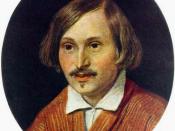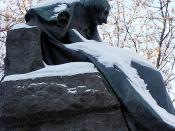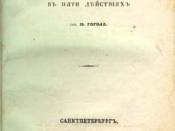At first glance of Nikolay Gogol's novel The Overcoat, one would only see a short
story about a poor man wishing to survive in a cruel world. However, in looking further
into the story, deep symbolism can be found. Gogol lived in Russia during the rise of the
communist party, and was a great dissident of communism. He believed the inevitable end
of a communist government was total failure. He also criticized the other government of
the world for failing to aid Russia in its quest for a better system. Gogol used his creative
mind and his writing abilities to speak out against the evils of the Russian government. He
used symbolism to prove his points, and often risked exile by his own government for
expressing such radical views. Many different objects in The Overcoat can be mirrored
with the objects of true life. Everything from Akaky Akakyevitch's coat, to his
administrator is used by Gogol to symbolize the situation of Russia during Gogol's time.
In truth, the Russian government was against the free-thinking man, and so was against
Gogol.
Akaky himself is used as a symbol of the Russian people. The communists were
against any sort of free-thinking, and respected any man who performed his duties without
question. Akaky is described in the story as being a quiet, hard-working man. He keeps
mostly to himself, having very little to do with the outside world. His entire life centers
around his profession. Akaky's life changes only after he buys his new overcoat. The
overcoats in the story symbolize different governments. Akaky's original 'dressing
jacket,' is the Russian government in power before communism took over. The
government, like the overcoat, once served its purpose, but is now worn thin and needs a
replacement. The original color of the coat cannot...


